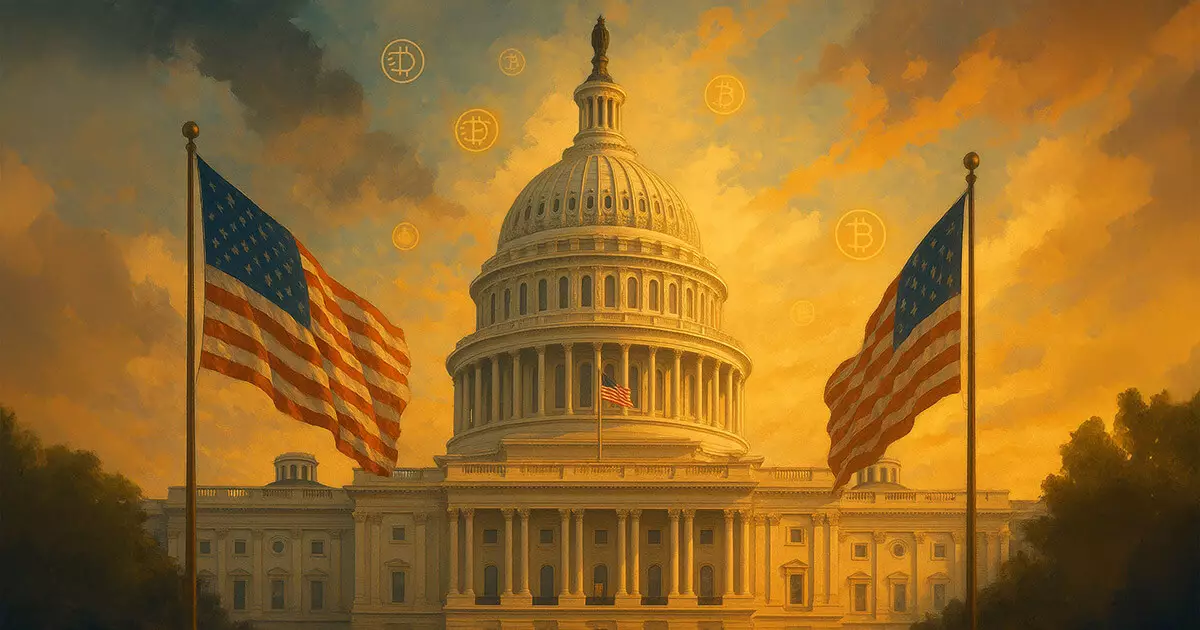In the midst of the whirlwind of legislative activity, the U.S. House of Representatives has declared a focused “Crypto Week,” signaling a pivotal moment in the nation’s approach to digital assets. While the intention behind this concerted effort appears to be fostering leadership and clarity in an otherwise chaotic regulatory landscape, it also reveals underlying tensions about control, innovation, and the future role of government in finance. The centerpiece is the proposed CLARITY Act, which attempts to untangle the confusing web of existing regulations by decisively assigning oversight to the appropriate agencies. This move is not just about clarity—it’s about control. By delineating the authority between the SEC and CFTC in defining what constitutes a security versus a commodity, lawmakers aim to create a more predictable environment. Yet, this clarity may come at the expense of innovative agility, constraining startups and disruptors who crave flexibility rather than rigid jurisdictional boundaries. Nonetheless, the act’s emphasis on anti-fraud protections and responsible innovation shows a recognition that regulatory overreach should not suffocate markets, but the question remains whether this balance can truly be achieved or will merely serve as a stepping stone towards heavier regulation under the guise of safeguarding.
Stablecoins and the Fight for the Future of Digital Money
The bipartisan GENIUS Act, recently enacted in the Senate, stands out as a beacon of pragmatic policymaking in a field riddled with uncertainty. It establishes a precedent for treating stablecoins—digital assets backed by traditional fiat—by creating a federal framework that encourages innovation while prioritizing consumer safeguards. At its core, this act seeks to legitimize dollar-backed digital currencies within the existing monetary system, aligning digital asset growth with the preservation of America’s monetary sovereignty. However, this legitimacy is a double-edged sword. While it invites institutional trust and integration into mainstream finance, it also grants the federal government significant oversight power. In doing so, it risks stifling innovative, decentralized financial concepts that could challenge the status quo, especially if overly bureaucratic regulations become burdensome. Critics might argue that such legislation, though seemingly forward-looking, paves the way for increased government influence—an outcome that the center-right faction should cautiously scrutinize.
The Anti-CBDC Legislation: A Bold Stand for Financial Privacy
Perhaps one of the most intriguing and controversial elements of this legislative push is the Anti-CBDC Surveillance State Act, which seeks to outright prohibit the Federal Reserve from issuing a central bank digital currency (CBDC) directly or indirectly to individuals. With increasing concerns over government surveillance and erosion of financial privacy, this bill positions itself as a principled stand for individual sovereignty—an essential value within center-right liberalism. The proposal suggests that the creation of a retail CBDC could open the floodgates for government overreach, allowing unprecedented monitoring of personal financial activities and thus threatening civil liberties. While opponents of this bill might argue that a CBDC could enhance transaction efficiency and combat illicit activity, its proponents claim that the risks to privacy outweigh those benefits. The U.S.’s refusal to adopt a CBDC signals a clear belief that monetary and personal freedoms should not be sacrificed at the altar of technological progress. It’s a pragmatic assertion that government power should not be unchecked, especially in an era where digital currency could serve as a Trojan horse for intrusive surveillance.
Balancing Innovation and Prudence in the Digital Age
The legislative efforts during Crypto Week reveal an America grappling with its own ambition—aspiring to be a global leader in digital finance—yet wary of losing control over its financial sovereignty. While these laws clearly aim to carve out a space where innovation can flourish, they also emphasize the importance of safeguarding economic stability, consumer rights, and national sovereignty. The move towards defining clear regulatory boundaries suggests a pragmatic understanding that unchecked innovation risks creating chaos rather than prosperity. Simultaneously, the resistance to a federally issued CBDC underscores a cautious approach rooted in a desire to preserve individual freedoms. It reflects a philosophy that technological advancements must serve society, not enslave it under the guise of progress. Whether these laws mark the beginning of a new era in American digital finance or merely a temporary reaction to market volatility remains to be seen. However, it is undeniable that they embody a balanced, center-right approach—seeking to foster responsible growth while fiercely guarding core liberties. The real test lies ahead: whether policymakers can maintain this equilibrium amid mounting pressures from both regulators and innovators vying for dominance in the digital arena.



















Leave a Reply